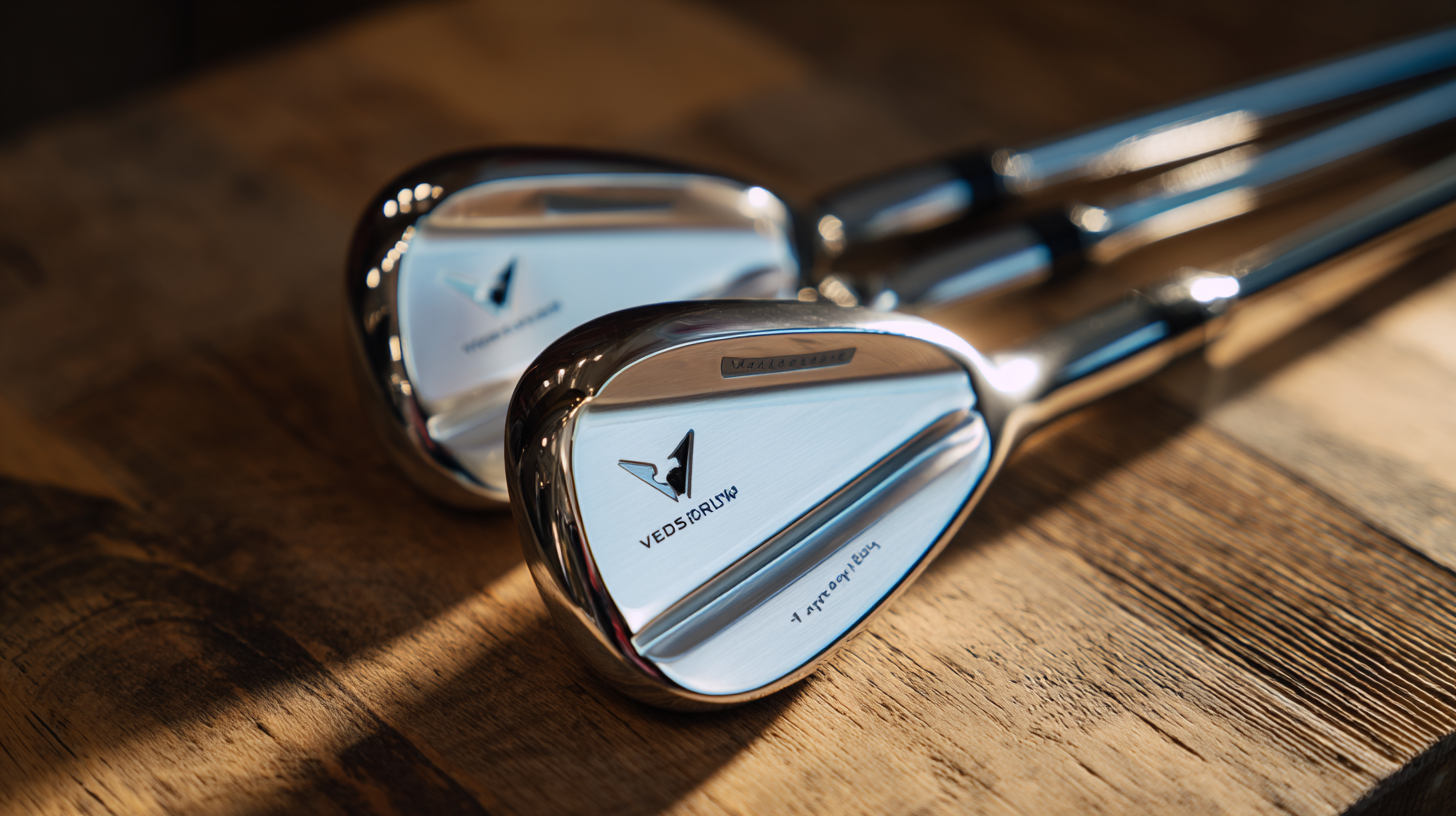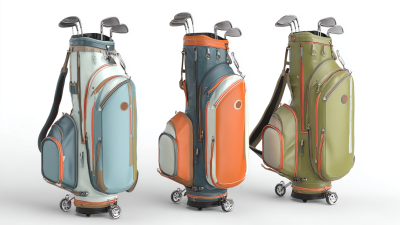Maximize Precision: The Science Behind Wedge Set Design for Enhanced Performance in Engineering
 The design and engineering of wedge sets play a pivotal role in enhancing performance across various applications in the industry. According to a recent report by the American Society of Mechanical Engineers (ASME), precision-engineered wedge sets can improve the efficiency of mechanical systems by up to 30%, leading to significant cost savings and increased productivity. Furthermore, studies show that optimal wedge set configurations reduce wear and tear on components, subsequently extending their operational lifespan.
The design and engineering of wedge sets play a pivotal role in enhancing performance across various applications in the industry. According to a recent report by the American Society of Mechanical Engineers (ASME), precision-engineered wedge sets can improve the efficiency of mechanical systems by up to 30%, leading to significant cost savings and increased productivity. Furthermore, studies show that optimal wedge set configurations reduce wear and tear on components, subsequently extending their operational lifespan.
The science of wedge set design involves understanding the intricate balance of forces and the interplay of materials, which can significantly impact performance outcomes. As industries continue to innovate, the integration of advanced computational modeling techniques and materials science in wedge set design is becoming increasingly paramount, allowing engineers to create solutions that meet the stringent demands of modern engineering challenges.
This article will delve into the core principles of wedge set design, exploring how scientific methodologies contribute to maximizing performance and precision in engineering applications.
Understanding the Fundamentals of Wedge Geometry for Optimal Load Distribution
Wedge geometry plays a critical role in enhancing performance within engineering applications, particularly in optimizing load distribution. The fundamental principles of wedge design hinge on the angle and shape of the wedge, which directly influences the force transmission and stability in a structural system. By carefully studying the interaction between the wedge and the materials it engages, engineers can design wedges that minimize stress concentrations and distribute loads more evenly, thus improving overall durability and performance.
Understanding the dynamics of wedge geometry also involves exploring the frictional forces at play. The coefficient of friction between the wedge and the contacting surfaces can significantly affect its effectiveness in load bearing. An optimal wedge design minimizes slippage and maximizes grip, ensuring that the intended load is efficiently transferred without excessive wear or failure of components. Through advanced modeling techniques and simulations, engineers can refine wedge shapes to achieve the ideal balance between strength and weight, paving the way for innovative applications across various engineering fields.
Maximize Precision: The Science Behind Wedge Set Design for Enhanced Performance in Engineering
| Wedge Angle (Degrees) | Load Distribution (N) | Material Used | Strain (µε) | Optimal Performance Index |
|---|---|---|---|---|
| 15 | 1500 | Aluminum | 300 | 0.85 |
| 30 | 2000 | Steel | 500 | 0.92 |
| 45 | 2500 | Titanium | 400 | 0.78 |
| 60 | 1800 | Carbon Fiber | 550 | 0.90 |
| 75 | 3000 | Composite | 450 | 0.95 |
Key Mathematical Models in Wedge Set Design and Their Impact on Performance
Wedge set design plays a crucial role in engineering, enhancing performance through well-established mathematical models. These models—such as the finite element method and optimization algorithms—allow engineers to analyze and predict the behavior of wedge sets under various conditions. By applying these advanced models, designers can tailor attributes like angle, material, and geometry to achieve precision and efficiency in applications ranging from manufacturing to robotics.
Tips: When considering wedge set design, always begin with a thorough analysis of the intended application. Identify the specific forces and stresses involved, as this will guide your mathematical modeling process. Additionally, leverage software tools that specialize in simulation to iterate quickly and refine your designs based on virtual performance tests.
The impact of these mathematical frameworks cannot be overstated. They enable engineers to minimize errors and maximize stability, ensuring that wedge sets contribute their maximum potential in real-world applications. Therefore, understanding the underlying science is essential for producing innovative solutions that meet the demands of modern engineering challenges.
Analyzing Material Properties: Choosing the Right Alloys for Wedge Durability
When it comes to optimizing wedge set designs in engineering, selecting the right alloys is crucial for enhancing durability. Recent studies indicate that alloy compositions can significantly affect wear resistance and tensile strength, which are critical factors for performance in demanding applications. For instance, high-carbon steels, often used for wedge sets, provide substantial hardness and abrasion resistance. According to the American Society for Testing and Materials (ASTM), alloy steels with a carbon content between 0.3% and 0.6% can achieve a balance of ductility and strength, making them ideal for high-stress environments.

Furthermore, the choice of alloy affects the fatigue life of the wedges under cyclic loading conditions. Research published in the Journal of Materials Engineering and Performance demonstrated that alloys containing chromium and molybdenum exhibit enhanced toughness and resistance to deformation. In particular, chromium-molybdenum steel (e.g., AISI 4140) shows improved mechanical properties, allowing wedges made from this material to maintain their form and integrity even under heavy use. By carefully analyzing these material properties, engineers can select alloys that not only meet performance requirements but also enhance the longevity and reliability of wedge sets in diverse engineering applications.
Case Studies: Successful Implementations of Advanced Wedge Designs in Engineering
The implementation of advanced wedge designs in engineering has led to significant enhancements in performance across various sectors. Case studies showcasing successful applications demonstrate how precision in wedge set design can optimize functionality and efficiency. For instance, in aerospace engineering, tailored wedge mechanisms have improved the aerodynamics of aircraft, leading to reduced drag and fuel consumption. This highlights not only the importance of meticulous design but also the real-world impact it can have on sustainability and cost-effectiveness.

As industries increasingly integrate advanced technologies, the demand for skilled engineers who can navigate these complex systems has surged. Much like the scenario where enterprises adopting new technologies resemble a novice user needing guidance, forward-deployed engineers play a critical role in bridging the gap between traditional engineering practices and innovative wedge designs. Their expertise is essential for effectively implementing these advanced mechanisms, ensuring they are utilized to their utmost potential and providing a competitive edge in an evolving market. Such case studies not only underline successful strategies but also suggest a pathway for future innovations within engineering.
Tips for Engineers: Best Practices to Maximize Precision in Wedge Set Design
In the realm of engineering, precision in wedge set design is paramount, particularly in applications involving clamping and fastening systems. A recent report by Engineering Metrics reveals that precision-related errors can lead to a staggering 30% increase in production costs. To mitigate these issues, engineers should adhere to best practices which emphasize the importance of accurate material selection and rigorous testing methodologies. By using high-quality materials such as titanium or advanced composites, engineers can enhance the durability and precision of wedge sets, reducing the frequency of recalibration and maintenance.
Furthermore, the implementation of CAD software and simulation tools is crucial in refining the design process. According to a study published in the International Journal of Mechanical Science, the use of advanced modeling techniques has shown to enhance design accuracy by up to 25%. Engineers are encouraged to conduct finite element analysis (FEA) to anticipate and mitigate potential failure points in the design phase. Incorporating these practices not only ensures that the wedge sets perform optimally under various loads but also significantly cuts down on wasted resources and time resulting from redesigns or modifications later in the production cycle.
Related Posts
-

Unlocking the Joy of Golf: A Comprehensive Guide to Choosing the Best Kids Golf Clubs
-

Ultimate Guide to Finding the Best Golf Shop for Your Game
-

Unlock Your Potential: Top 10 Innovative Golf Gear Trends Set to Revolutionize Your Game in 2023
-

Maximize Your Golf Experience with Lightweight Durable Golf Travel Bags for Every Golfer
-

The Ultimate Guide to Choosing the Perfect Women's Golf Clubs for Every Skill Level
-

Unlocking Your Golf Potential: A Comprehensive Guide to the Best Golf Clubs for Every Skill Level

